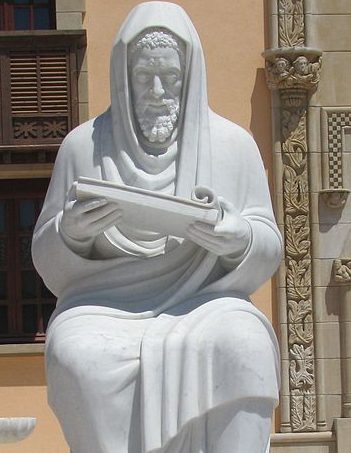
December 17 1140 – 5 Tevet 4901
Judah Halevi arrived in the Egyptian port of Damietta en route from Cairo to the land of Israel, to be warmly received by his old friend Abu Said Halfon. The famous doctor, poet and philosopher had ostensibly left his Spanish homeland due to the unstable political situation, but in fact it was his belief that only in the Holy Land can a Jew live a truly fulfilled life that directed his steps.
Halevi’s most famous poems are those yearning for the land of Israel, of which he wrote “My heart is in the East, and I am in the nethermost West.” But he is also celebrated as the author of many liturgical poems still read on 9 Av, commemorating the destruction of the Temple, as well as other prayers and Sabbath songs. In philosophy, his Kuzari, a fictitious discussion between the King of Khazars and an unknown Jewish sage on the merits of the three monotheistic religions, after which the king converted with all his subjects to Judaism, is widely studied.
The last documented fact of Halevi’s life is his departure from Alexandria by ship for the Holy Land. After a few days of waiting for a fair wind with its passengers already on board, Halevi’s ship set sail on the first day of Shavuot, 6 Sivan 4901, May 14 1141. Legend has it that on his arrival at the gates of Jerusalem, Halevi was trampled to death by an Arab horseman. The first letter recording his death, assumed to have occurred in the month of Av that year, is from Marheshvan 4902, October 1141 – all preserved, along with Halevi’s poetry diwan, in the Cairo Geniza.
